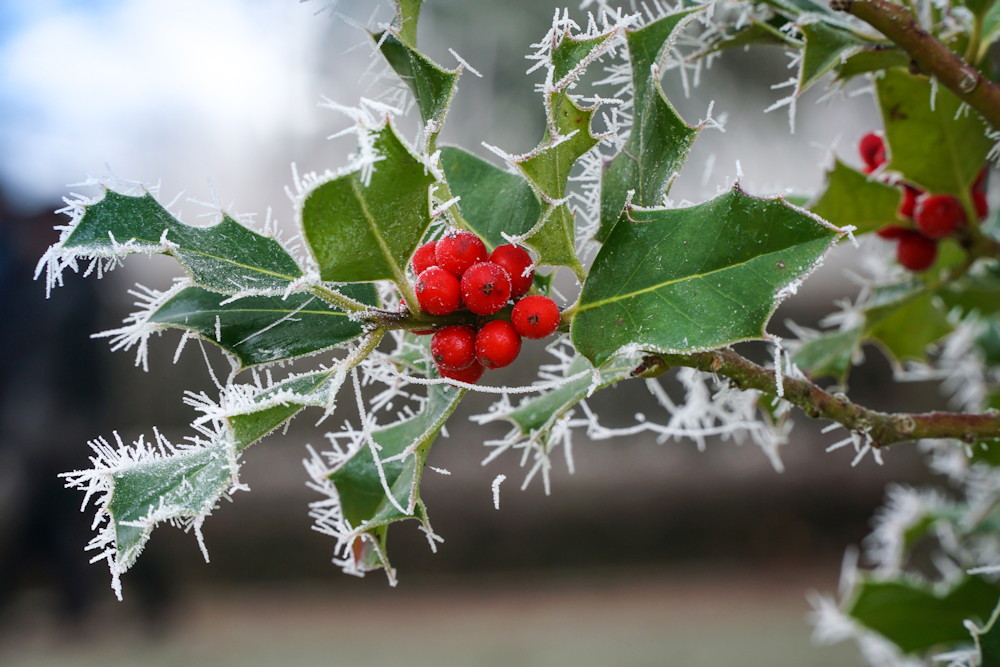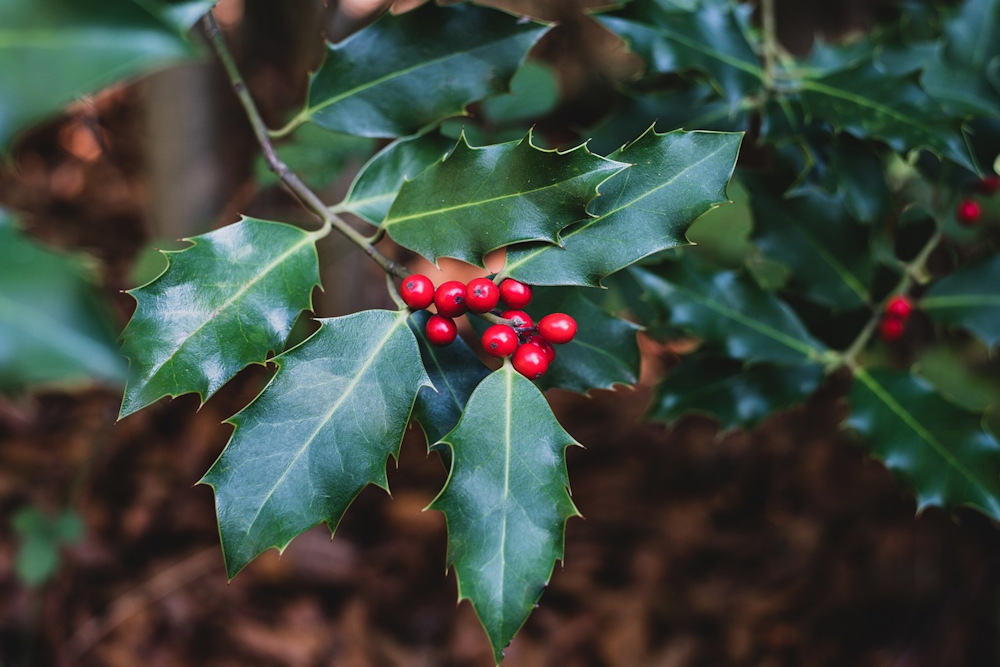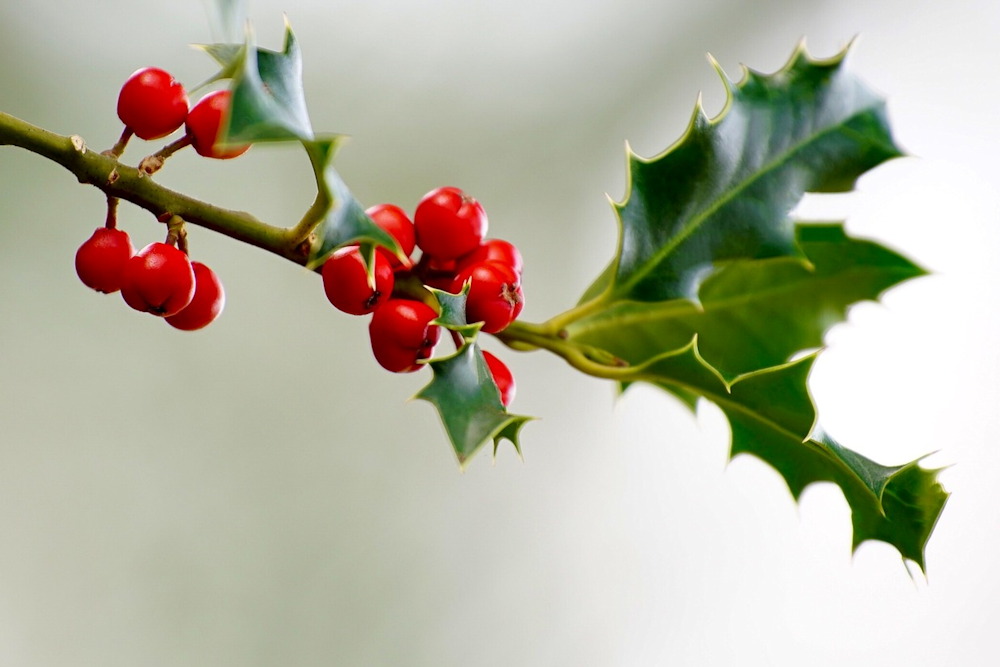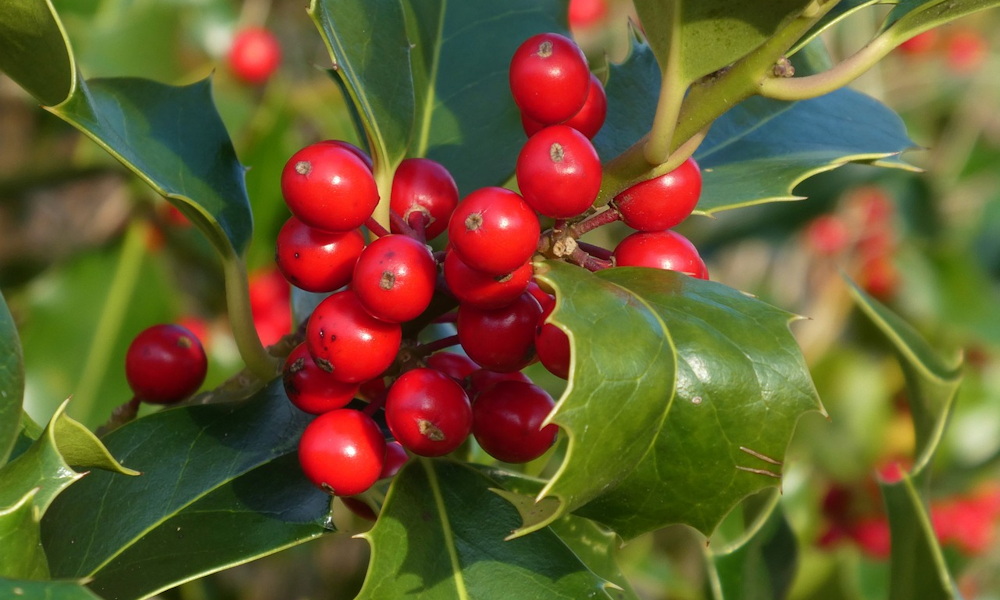As the festive season draws near, our gardens and homes come alive with the vibrant hues of holly (Ilex), an evergreen symbol that has woven itself into the fabric of Christmas traditions. Beyond its ornamental charm, holly boasts a rich tapestry of history, folklore and ecological significance. In this article, we delve into the enchanting world of holly, exploring its botanical wonders and uncovering the magic it brings to the holiday season.
Holly’s Botanical Ballet
Holly belongs to the genus Ilex, which encompasses a diverse family of over 400 species, ranging from deciduous shrubs to evergreen trees. One of its most celebrated species is Ilex aquifolium, commonly known as English holly. Characterized by glossy, spiky leaves and bright red berries, this species takes center stage in Yuletide decorations worldwide.

The Symbolic Significance
The association between holly and Christmas is deeply rooted in symbolism. The prickly leaves are said to represent the crown of thorns worn by Jesus, while the vibrant berries symbolize his blood. Pagan traditions also revered holly for its ability to thrive in winter, embodying hope and renewal.

Holly in Folklore
Holly’s mystical allure extends into folklore, where it is often depicted as a protective charm against evil spirits. In Celtic traditions, it was believed that bringing holly into the home would ensure good luck and safeguard against malevolent forces.
Ecological Importance
Beyond its festive charm, holly plays a crucial role in supporting wildlife. The berries serve as a vital food source for birds during the winter months, ensuring their survival when other food is scarce. The dense foliage also provides shelter for small mammals and insects.

Holly Varieties for Every Garden
With a plethora of holly varieties available, gardeners can choose the perfect fit for their landscape. From the classic English holly to the variegated ‘Golden King’ and the dwarf ‘Blue Prince,’ there’s a holly for every taste and garden size.

Growing and Caring for Holly
Holly is a versatile and hardy plant, thriving in well-drained soil and partial to full sunlight. Regular pruning helps maintain its shape and encourages lush growth. When planting, consider the eventual size of the holly variety to ensure it has ample space to flourish.
The Holly Chronicles: Beyond Tradition and Ornamentation
- Gender Divide: Holly plants are dioecious, meaning individual plants are either male or female. Only female plants produce the iconic berries, which require pollen from a nearby male plant for fertilization.
- Evergreen Resilience: Holly’s evergreen nature isn’t just for show. The leaves can withstand winter’s chill, making it a symbol of strength and endurance during the coldest months.
- Global Presence: While English holly is a quintessential Christmas plant, various holly species can be found on almost every continent. From the European holly to the American holly, each variety carries its own unique charm.
- Historical Ties: The use of holly in celebrations predates Christmas traditions. Romans decorated their homes with holly during the festival of Saturnalia, a precursor to our modern holiday festivities.
- Medicinal Marvel: In traditional medicine, holly has been used for its anti-inflammatory properties. While not as commonly utilized today, some herbalists still incorporate holly extracts into remedies.
- Holly Wood: In addition to its symbolic and ornamental uses, holly wood is prized for its hardness and smooth texture. Historically, it has been used to craft fine furniture, walking sticks and even engraving blocks.

As we embrace the magic of the holiday season, let the presence of holly in our gardens and homes serve as a reminder of the enduring traditions and timeless beauty that this botanical marvel brings to our festive celebrations. Whether adorning our homes with wreaths or enjoying its evergreen splendor in the garden, holly continues to enchant and captivate, making it an integral part of our Christmas festivities.









